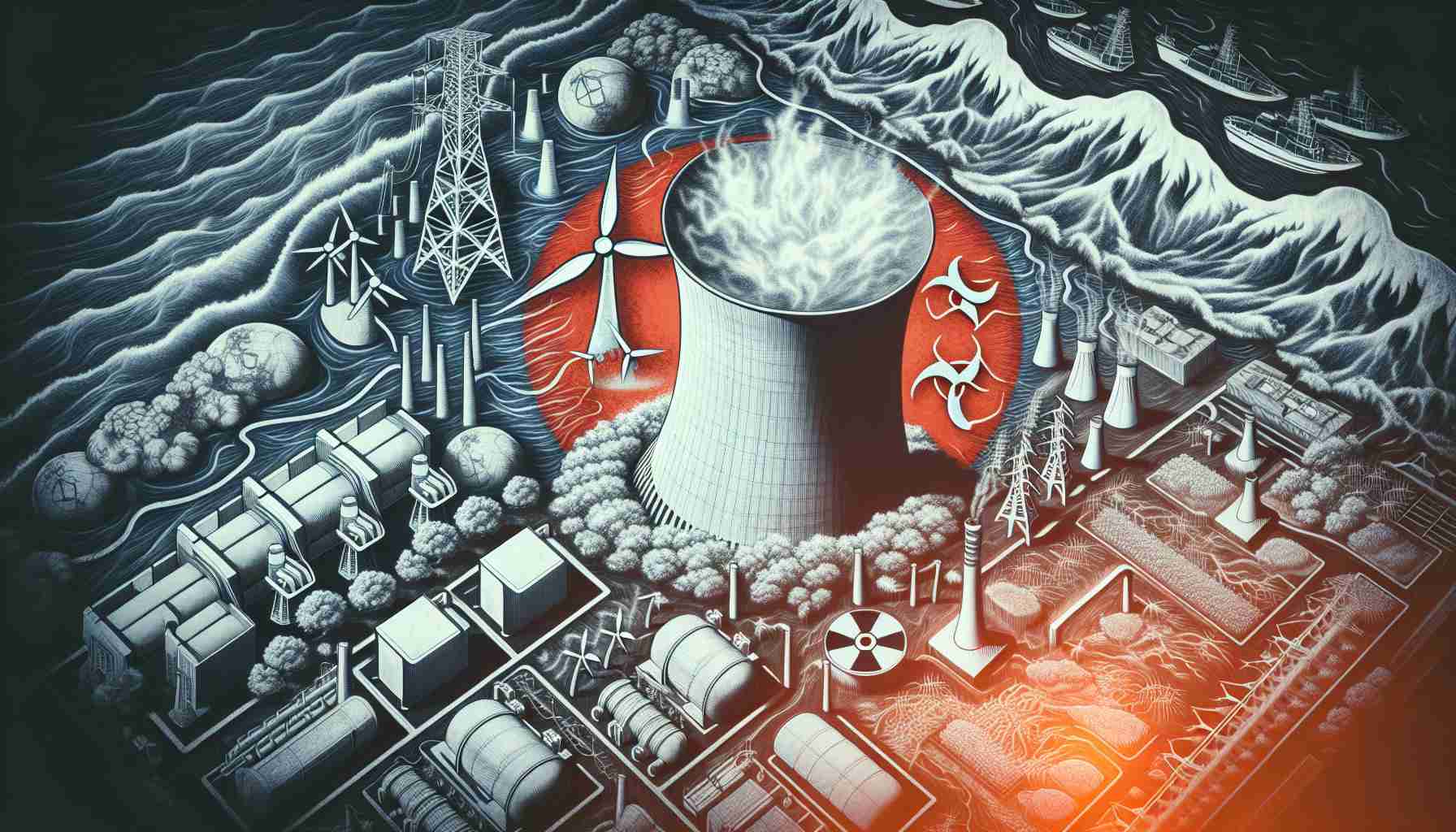- Small nuclear reactors are experiencing renewed interest due to ongoing energy challenges and the need for sustainable solutions.
- The concept, initially promising in the 1960s, fell out of favor as larger reactors dominated the industry.
- For small reactors to compete with renewables, significant production increases are needed.
- Current projects, like the Carbon Free Power Project, face hurdles due to financial and expertise concerns.
- Governmental commitment to nuclear innovation is fluctuating and may hinder progress until after upcoming elections.
- Re-examining small nuclear technologies could play a crucial role in future energy strategies.
In a world wrestling with energy challenges, the spotlight is back on small nuclear reactors, a concept that originally sparked hope in the 1960s only to be sidelined due to high costs. Recently, a panel in Salt Lake City unveiled the tangled history of these mini powerhouses, revealing why their time might be ripe for revival.
Experts like Scott Kemp, a leading nuclear science academic, shared that the idea of smaller reactors isn’t new; it was our starting point in the nuclear age. Back then, the promise of affordable energy from small designs was overshadowed by the industry’s push for bigger, more powerful reactors. Now, to make small reactors cost-competitive with renewables and other energy sources, an enormous scale-up is essential. Millions of units would need to be built!
The discussion turned to the Carbon Free Power Project, halted due to lack of interest from independent power producers and soaring costs. Critics voiced concerns about relying on municipal investors, who often lack nuclear expertise.
Amidst this tangled web, doubts linger about governmental commitment to nuclear innovation, particularly under changing political tides. Despite ongoing efforts, like Gov. Spencer Cox’s Operation Gigawatt aiming to invest $20 million in nuclear initiatives, many believe tangible advances may not materialize until after significant upcoming elections.
Ultimately, the push for small nuclear reactors highlights a critical message: as we seek sustainable energy solutions, re-examining past technologies could illuminate a path forward. Keep an eye on how these developments unfold—they could reshape the future of energy!
Small Nuclear Reactors: A Game Changer for the Future of Energy?
In recent discourse about sustainable energy solutions, small nuclear reactors are gaining renewed attention as a viable option for addressing today’s energy challenges. Initially embraced in the 1960s but overshadowed by the push toward larger reactors, the concept of small nuclear power plants has resurfaced as a potential answer to the world’s escalating energy demands. Let’s explore relevant insights, market forecasts, and emerging trends surrounding this technology.
Innovations in Small Nuclear Reactors
Modern advancements in technology have spurred innovation within small modular reactor (SMR) designs. These reactors promise enhanced safety, reduced waste, and the ability to integrate seamlessly with renewable energy sources. Companies like NuScale Power are forging ahead with designs that could produce clean energy while minimizing environmental impact, addressing safety concerns that have historically plagued nuclear energy.
Market Forecasts and Pricing Trends
Experts predict that, should regulatory and financial barriers be alleviated, the small nuclear reactor market could grow significantly over the next decade. According to a recent report, the global small modular reactor market is projected to reach approximately $18 billion by 2030, with a compound annual growth rate (CAGR) of over 10%. This growth is largely fueled by increasing investments in renewable energy and a global shift towards carbon neutrality.
Use Cases and Limitations
While small nuclear reactors offer many advantages, they are not without limitations. Significant upfront capital investment and extended timelines for deployment remain prominent challenges. Additionally, public perception and regulatory hurdles can slow down progress. However, SMRs can be particularly useful in remote areas where traditional grid access is limited, as they can provide energy security and stability.
Pros and Cons of Small Nuclear Reactors
| Pros | Cons |
|—————————————-|——————————————-|
| Smaller footpprint and modular design | High upfront capital costs |
| Enhanced safety features | Regulatory and public acceptance hurdles |
| Potential for lower operational costs | Limited deployment experience in some regions |
| Ability to be integrated with renewables| Competition with rapidly advancing renewables|
Security and Sustainability Aspects
Security is a paramount concern for nuclear energy. Recent innovations focus on building in redundancies and safety monitoring to mitigate risks associated with accidents or terrorist threats. On the sustainability frontier, small reactors produce significantly low emissions compared to fossil fuels, making them an attractive option as countries strive to meet carbon reduction goals.
Important Questions
1. What role do small nuclear reactors play in achieving energy independence?
Small nuclear reactors can significantly contribute to energy independence by providing a reliable and consistent source of power, allowing regions and countries to reduce their reliance on imported fossil fuels while fostering energy security.
2. How do small nuclear reactors compare to other renewable energies like solar and wind?
While solar and wind energy are sustainable, they are intermittent by nature. Small nuclear reactors offer a continuous power supply, effectively balancing out the variability of renewables, making them a complementary solution in a diversified energy portfolio.
3. What steps need to be taken to accelerate the deployment of small nuclear reactors?
To accelerate deployment, industry stakeholders must focus on regulatory reforms, stakeholder engagement to shift public perception, and increased investments in research and development. Additionally, establishing partnerships with energy providers could foster more interest and commitment on the investor side.
For more insights into small nuclear reactors and energy trends, visit NEI.
The source of the article is from the blog j6simracing.com.br













